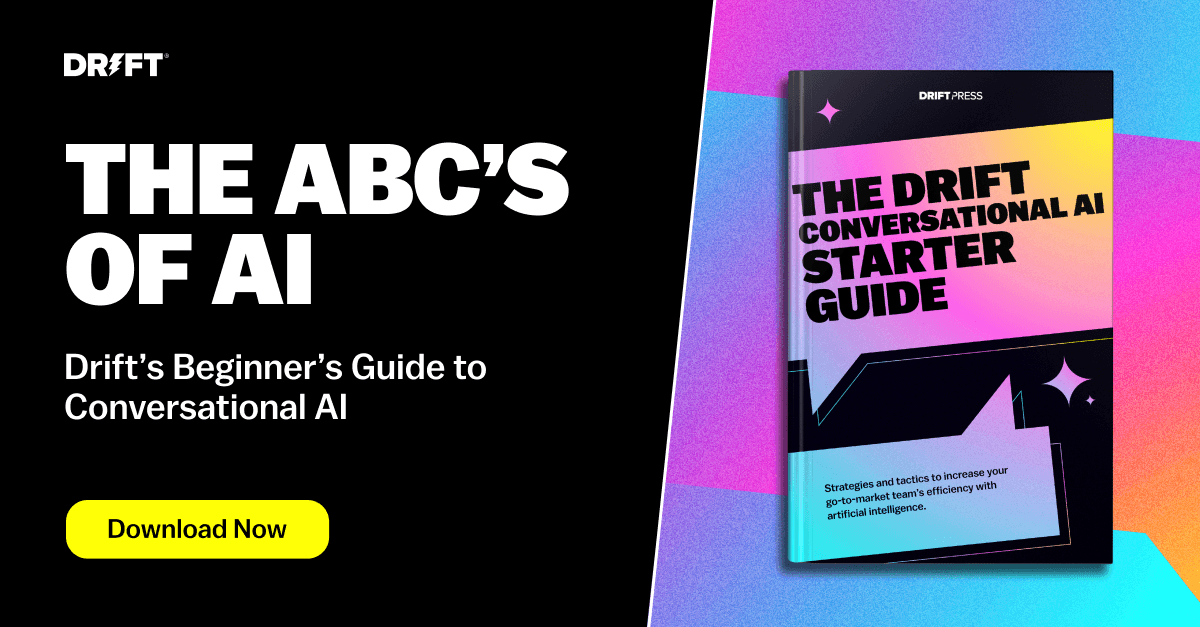A few weeks ago, my roommate, a talent acquisition coordinator, had a demo call with an HR software she was evaluating for her team. On the call, the rep said, “We gather the information with AI.”
When debriefing the call to her boss, my roommate repeated that phrase verbatim — that the company gathers the information with AI. When her boss asked her what that meant, she didn’t have an answer…and the two moved on.
I’m confident that this isn’t a one-off situation — where someone looking to buy a new solution doesn’t understand how it works, and therefore, doesn’t understand its value. And, at the same time, they fail to understand the risks associated with it, too.
Artificial intelligence (AI) has become so popular so fast that people haven’t had a chance to learn what it really is. Because of this, when the topic of AI comes up in conversation, people tend to jump to conclusions, face decision paralysis, or hesitate to ask questions in fear of sounding ignorant.
If you’ve ever felt this way, then you’re certainly not alone. And that’s why we’re here.
Welcome to the AI dinner table — a place to learn all things artificial intelligence. Here, you’ll get all the answers you need to have an informed conversation around AI so that hopefully, you’ll feel equipped to take the lead in your next AI meeting.
Jump ahead to learn about:
GPT and Generative AI
Conversational AI
AI Safety & Concerns
AI Personalization
AI Questions to Consider
GPT and Generative AI
A big reason that AI is in the news today is because of this little tool called ChatGPT. ChatGPT isn’t a category of AI in and of itself. You can think of it as the Kleenex version of GPT. There are many brands of tissues, but sometimes, we refer to all tissues as Kleenex. The same goes for ChatGPT and GPT.
So, what does GPT stand for?
Generative Pretrained Transformer.
- Generative means that the AI generates new text based on the input it receives.
- Pretrained means that the AI is trained on a large corpus of text data (data gathered from the internet).
- Transformer means that the AI uses a transformer-based neural network architecture to process input text and generate output text.
GPT is one form of generative AI, but it’s not the only one. Generative AI represents a whole suite of AI solutions that (surprise!) generate things. This could be text for social media posts, website code, images, and more. For example, ChatGPT is most commonly used for content generation like emails, blogs (not this one), and summaries.
Images are where we can see another form of generative AI at work. Called generative adversarial networks (GANs), this form of generative AI is adversarial because it’s trained on two models that work against each other. First, the generator produces obviously fake data, then, through a feedback loop with the discriminator, it iterates to get closer and closer to the real data. Hollywood is currently taking advantage of GANs to generate a younger version of Harrison Ford for the upcoming Indiana Jones movie 👇

Conversational AI
Generative AI isn’t the only form of artificial intelligence (not by a long shot). Conversational AI has been around for decades, and we at Drift have been iterating on it for years.
Unlike generative AI, which focuses on outputs, Conversational AI focuses on outcome — i.e. what is the end goal the person hopes to achieve by interacting with the AI? This could be booking a meeting, downloading a piece of content, or even talking to a human.
If you’re familiar with Amazon’s Alexa, Conversational AI acts in a similar way.
Conversational AI uses natural language processing (NLP) and machine learning to turn inputs, like text or audio, into information it can decipher the intent behind based on pre-trained conversations. Once that intent is determined, the information is passed through a dialog manager, which pinpoints the correct response. From there, the response gets sent through a natural language generator (NLG) to produce a written or spoken response in a human-like tone.
Through machine learning, the AI continuously analyzes these conversations so that over time, the Conversational AI gets better at understanding context and customer needs.
Like how ChatGPT is a brand of GPT, Drift’s Conversational AI is a brand of Conversational AI. Our AI is specifically trained on B2B conversations to provide the most accurate answer (85% of the time) to a company’s customers and prospects.
AI Safety & Concerns
Undoubtedly, AI is an exciting topic, and certainly trendy. But as with all trendy topics (looking at you, frosted tips), it’s important to take into consideration the full impact that comes with it.
First and foremost, the biggest concern with AI is data security. ChatGPT confirmed a data breach at the beginning of May, which reinforces that companies need to take the same precautions with GPT as they do with all open-source databases. At Drift, we make sure that all personal identifiable information is scrubbed from conversations before being sent to OpenAI. And, by contract, even the information that is passed over can’t be stored for longer than 30 days.
The second concern is hallucinations. When you hear of an AI bot hallucinating, it means that the AI has generated a response that is either not real or relevant to the question being asked. This is one of the reasons why Drift’s Conversational AI incorporates human-in-the-loop. Humans are the ultimate guardrails, so for every AI solution, we believe that there should be a step for human review to ensure that the AI is providing the most appropriate and personalized experience for site visitors.
What does that look like with GPT? With Drift’s latest GPT innovations, we give humans the opportunity to review the suggested content before it’s sent back to the site visitor. Plus, by leveraging context from past conversations to inform the intent behind the current conversations, we further minimize the risk of hallucinations.
AI Personalization
Data gathered by AI can help you create more personalized experiences for your site visitors. But how do you do that without sounding creepy?
In one word: transparency. Particularly in the world of marketing and sales, it’s important that site visitors know when they’re interacting with AI and have the option to opt out of the interaction if they’d like to. That said, if the site visitor does opt in to the AI experience, every conversation thereafter helps you create even more personalized experiences for all site visitors.
For example, Drift’s Conversational AI is custom-trained to our customers’ businesses, meaning that it’s trained to respond to questions typically asked in their respective industry (financial services, manufacturing, software, etc.). Beyond that, through the power of human-in-the-loop, companies can train their AI chatbots to match their brand voice and ensure consistent messaging across all interactions.
Furthermore, Drift’s Conversational AI stores information within the product from each conversation so you can learn more about your buyer personas. Both marketers and sellers can use conversational analysis to iterate on the AI’s responses, inform their own conversations, and innovate on their campaign strategies.
AI Questions to Consider
The emergence of ChatGPT has democratized AI, and technology professionals and companies alike are keeping a keen eye on what AI can do for their organizations.
As leaders in the Conversational AI space, we believe that ChatGPT has shown us all how well AI can absorb massive amounts of information and automate certain forms of content creation. It also illustrates how generative AI can improve efficiency and generate valuable insights that help personalize the customer experience.
At the same time, new technologies don’t come without risks, so it’s important that you understand how the technology works before implementing it. If you’re thinking about getting started with AI at your organization, here are five questions you should always keep top of mind:
- How will the AI work with my existing tech stack?
- What does the learning curve look like to adopt this AI successfully?
- What type of data does the company’s AI use and store?
- How do we ensure that the data is stored securely?
- Is the AI solution customizable to my business needs and goals?
Final Thought
AI is certainly a hot topic right now — and for good reason. When implemented correctly, it can drastically improve your efficiency. But understanding what that correct implementation is for your business isn’t always so simple. Hopefully, now that you have some clarity on all of the nuances of artificial intelligence, you’ll feel prepared to take the leap into AI in a way that most benefits your business. If you’re ready to start that conversation, talk to us.
Want to keep these AI notes handy? Download our custom set of AI flashcards to quiz your coworkers on how much they know about AI.








